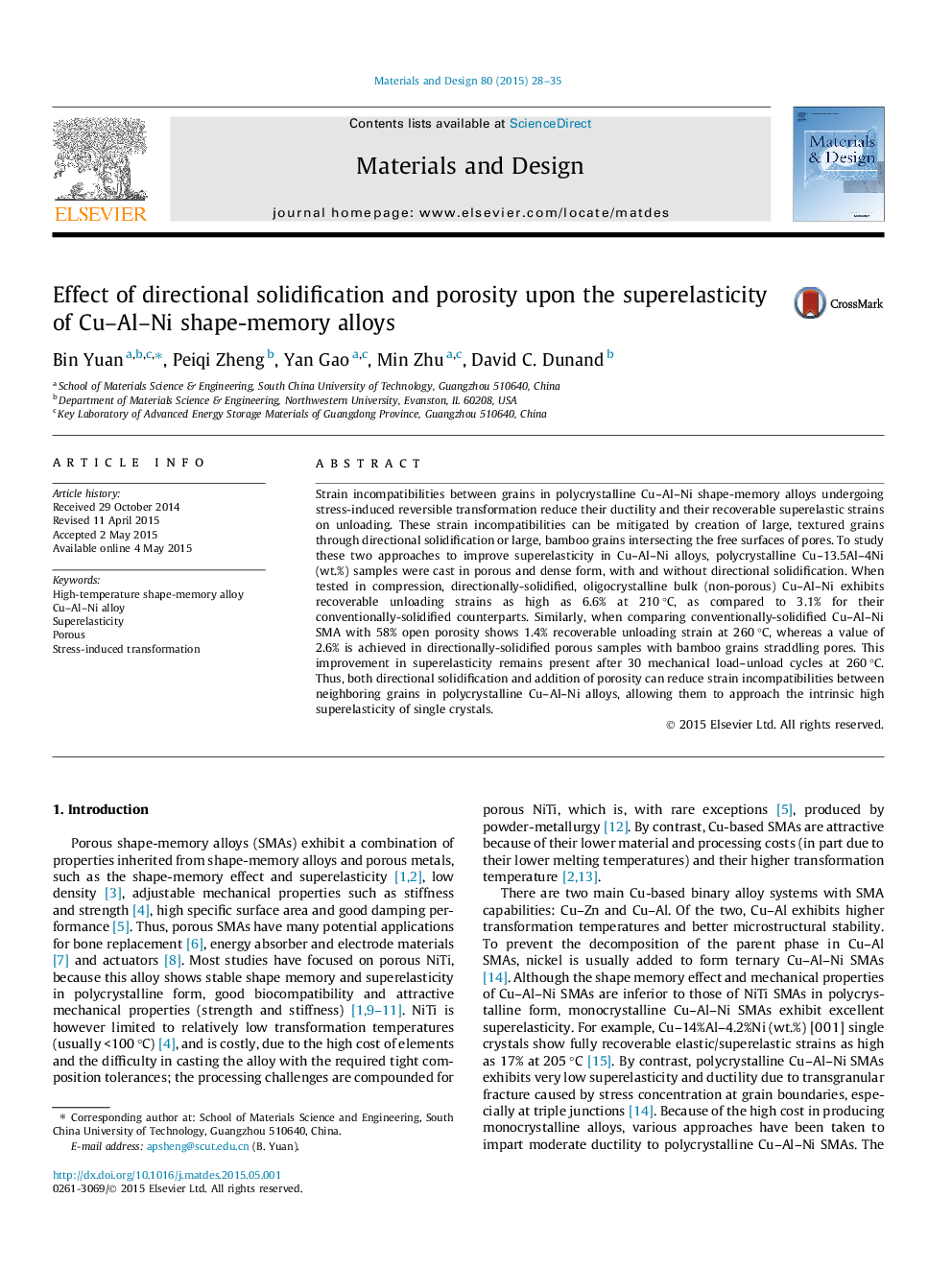| Article ID | Journal | Published Year | Pages | File Type |
|---|---|---|---|---|
| 828526 | Materials & Design (1980-2015) | 2015 | 8 Pages |
•We fabricate oligocrystalline Cu–Al–Ni shape-memory alloys by directional solidification.•The directionally-solidified, bulk sample exhibits superelastic strains as high as 6.6% at 210 °C.•The directionally-solidified, porous sample shows 2.6% superelastic strain recovery at 260 °C.•Two times improvements in superelasticity are achieved for either bulk or porous samples.
Strain incompatibilities between grains in polycrystalline Cu–Al–Ni shape-memory alloys undergoing stress-induced reversible transformation reduce their ductility and their recoverable superelastic strains on unloading. These strain incompatibilities can be mitigated by creation of large, textured grains through directional solidification or large, bamboo grains intersecting the free surfaces of pores. To study these two approaches to improve superelasticity in Cu–Al–Ni alloys, polycrystalline Cu–13.5Al–4Ni (wt.%) samples were cast in porous and dense form, with and without directional solidification. When tested in compression, directionally-solidified, oligocrystalline bulk (non-porous) Cu–Al–Ni exhibits recoverable unloading strains as high as 6.6% at 210 °C, as compared to 3.1% for their conventionally-solidified counterparts. Similarly, when comparing conventionally-solidified Cu–Al–Ni SMA with 58% open porosity shows 1.4% recoverable unloading strain at 260 °C, whereas a value of 2.6% is achieved in directionally-solidified porous samples with bamboo grains straddling pores. This improvement in superelasticity remains present after 30 mechanical load–unload cycles at 260 °C. Thus, both directional solidification and addition of porosity can reduce strain incompatibilities between neighboring grains in polycrystalline Cu–Al–Ni alloys, allowing them to approach the intrinsic high superelasticity of single crystals.
Graphical abstractFigure optionsDownload full-size imageDownload as PowerPoint slide
